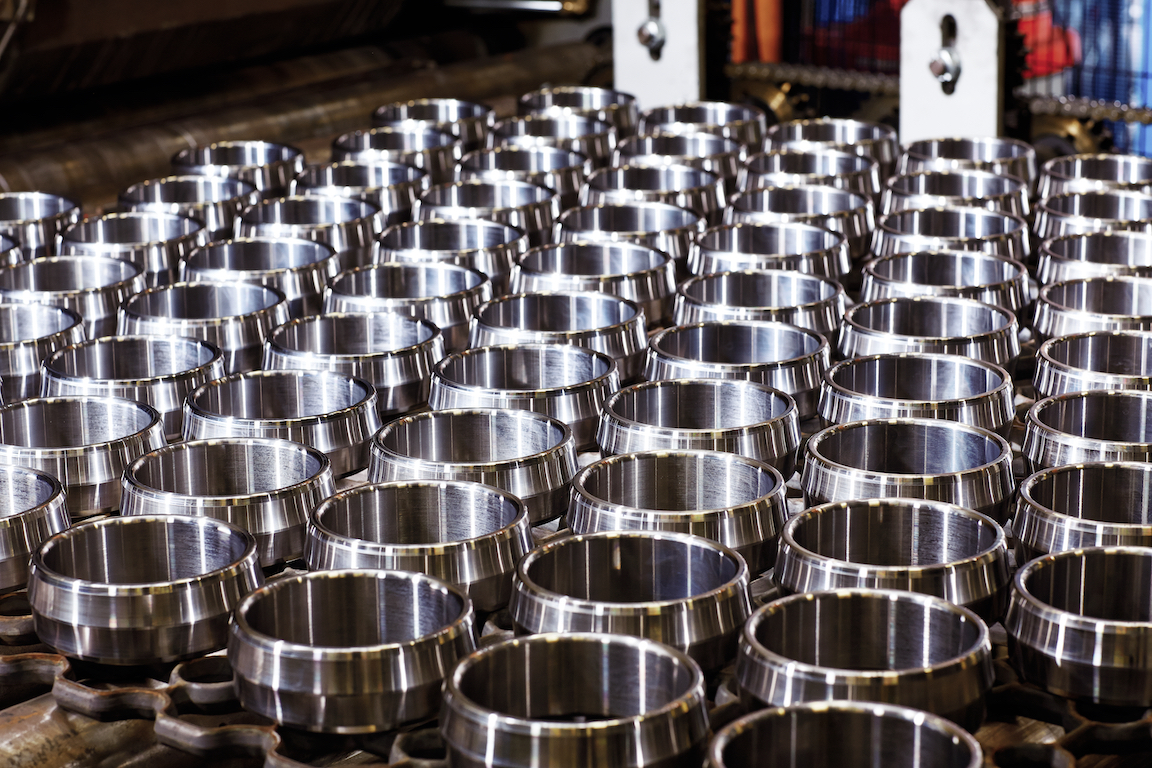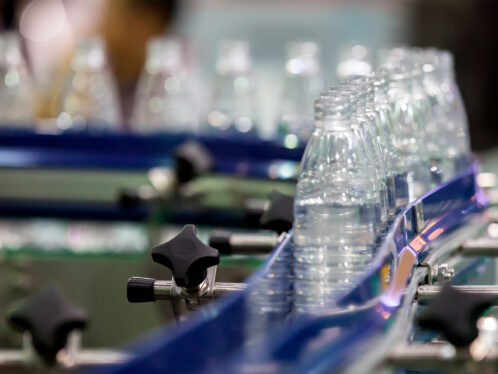
Bound for China
Following a decade of intense preparation, the sailing ship replica Götheborg III is now on its way to China. The ship has already shown her capabilities in severe wind conditions, but there is the prospect of further hardship – not only from the weather, but also from pirates. Evolution continues its report on the adventures of Götheborg III.
Following a decade of intense preparation, the sailing ship replica Götheborg III is now on its way to China. The ship has already shown her capabilities in severe wind conditions, but there is the prospect of further hardship – not only from the weather, but also from pirates. Evolution continues its report on the adventures of Götheborg III.
On June 6, 2004, Götheborg III, a replica of an 18th- century sailing ship, slowly and gracefully glided into the waters of Gothenburg harbour. It was the first important step of a journey that would take the ship to China – a step witnessed by Sweden’s King Carl XVI Gustaf, who is the ship’s protector, and Queen Silvia, the ship’s godmother, along with thousands of onlookers. The event was broadcast on both Swedish and Chinese television.
But it would be almost two years, after much more work and many test sailings, before the ship would be ready for the high seas. Finally, on October 2, 2005, Götheborg III set off on a voyage, which is taking her to Shanghai in August 2006, after stops in Spain, Brazil, South Africa, Australia and Indonesia.
Outside the city of Vigo, in Spain, Götheborg III loaded each of its 10 cannons with 200 grams of gunpowder. Spanish King Juan Carlos, who was onboard visiting the ship, helped fire the shots, which marked the start of the Volvo Ocean Race. After a stop at Cadiz, Spain, Götheborg III set sail for Brazil.
The ship’s baptism of fire came off Cap Finisterre in Spain, where she encountered winds of up to 27 metres per second. And more bad weather was in store. Off the coast of Brazil a fierce squall broke the topgallant mast, the uppermost of the three mast sections in the forward mast.
“There was no real danger to the ship,” explains Hans-Erik Emanuelsson, who is the chief technician. “The rig is designed to break to prevent the ship itself from being damaged. We have experienced
carpenters onboard who were able to repair the
broken mast.”
Götheborg III’saverage speed is estimated to be four to five knots, and so far, the maximum speed the ship has achieved is 11 knots.
“It’s fun to sail Götheborg,” says Peter Kaaling, who is captain on the leg from South Africa to Shanghai. “She has superb seagoing qualities and moves smoothly and efficiently, even in strong winds. Her windward sailing characteristics are also excellent for a square rigger; we can sail 60 degrees into the wind, which is fantastic.”
Sailing Götheborg III requires a big crew, as all work is done by hand. For example, 15 to 20 men are needed to hoist the largest sail, the main topsail. And to steer the ship, it takes two men to hold the wheel – three in heavy seas. The pressure exerted on the rudder is enormous. The rope that extends down to the rudder is made from elk skin, since elk skin is very strong and does not stretch.
Although weather continues to pose considerable danger for the Götheborg III and her crew, another considerable one is the danger of pirates, which abound in certain parts of the ship’s journey.
Present-day pirates use high-speed motorboats to hunt their prey, stealing whatever they can, including, in some cases, the ship itself.
“I don’t think the pirates would steal the vessel and dump us in the sea,” says Kaaling. “The greatest danger is that they would board the ship and steal anything of value. However, we have been promised a military escort in the Malacca Strait and off Somalia’s coast, where the risk from pirates is at its greatest.”
The crew comprises slightly fewer than 80 people, of whom 20 are officers. The rest are volunteers. About 4,000 people applied to take part in the voyage, which changes volunteers for each new leg of the journey. Some of the volunteers have extensive sailing experience; others have almost none. For the officers, the trip is split into two sections, with new officers taking charge in Cape Town, South Africa.
Work onboard is dividedinto shifts – four hours of work followed by eight hours of rest. A timber ship requires constant maintenance, since wood is eroded by sun, wind and rain. The crew’s carpenters are in constant attendance, as are the sailmakers who repair the sails and crew hands who tar hemp and caulk the deck.
The combination of hard work and being out at sea is exhausting. When the crew members are not working, they are most often sleeping in their hammocks. In between, substantial meals are consumed. Götheborg III has both a freezer and a cold-storage room, but on the long legs of the voyage, the fresh food quickly runs out. After that, the crew has to settle for simpler food such as pasta, rice and frozen or tinned food.
Although the exterior of Götheborg III looks like an 18th-century ship, it boasts all conceivable modern technical equipment. One reason for this is that all ships that sail in international waters must comply with international safety requirements, which the Götheborg III now does. The hull is approved, as is the equipment, which includes five watertight bulkheads, double fire and bilge pumps and a fully-automatic sprinkler
system. Furthermore, the ship produces its own fresh water with the help of reverse osmosis technology. All technical equipment is watched over by a computerized alarm and surveillance system.
Götheborg IIIhas five diesel engines onboard: two Volvo Penta diesels, which generate 550 horsepower each and are responsible for propelling the ship forward; two engines that produce 180 kW of electricity each, corresponding to the power requirements of 20 single-family homes; and one 90 kW emergency generator in a concealed area.
Although Götheborg III has engine power, the ship is a sailing vessel. At a speed of five to six knots she consumes around 100 litres of diesel per hour; the four fuel tanks hold 36 cubic metres of fuel in total, which equals about 360 hours of running time, so it is essential to use fuel economically.
But even with all the technology, for Götheborg III the most important ingredient is the crew.
“Everything can be fixed,” explains Jesper Lindholm, a carpenter who was one of the team involved in building the ship from the very beginning. “Sailors are experienced at finding solutions to nearly everything, and we carry plenty of spare materials on the ship. In addition, we have 80 enthusiastic sailors onboard who are keen to assist.”
The Götheborg III is expected to spend four months in Shanghai, during which the ship’s rigging will be completely overhauled and the keel will be repainted. Then the ship will set sail for home. The return journey will include Hong Kong, Singapore, Malaysia, the Suez Canal, Spain and finally Gothenburg harbour.
A second journey to Shanghai has already been planned, this time via Norway, through the Panama Canal to the United States, onward to Tokyo and finally back to Shanghai, where the ship will participate in the World Expo in 2010.
An exact replica
On the outside, Götheborg III is an exact replica of the original sailing ship Götheborg I, which was built in 1738. It sank outside Gothenburg harbour in 1745 on the journey home from the ship’s third trip to China. In 1796, Götheborg II met a similar fate and sank off the coast of Cape Town in South Africa.
The work to build the replica ship began in 1996. Götheborg III is different from other similar projects in that the ship is built in accordance with international shipping standards, which means that she can be sailed on the ocean.
The ship is now on an eleven-month voyage to Shanghai, China.
The planned route is:
Leg 1. Gothenburg/Cadiz/Vigo (Spain)
Leg 2. Cadiz/Recife (Brazil)
Leg 3. Recife/Cape Town (South Africa)
Leg 4. Cape Town/Port Elizabeth/Fremantle
(Australia)
Leg 5. Fremantle/Jakarta (Indonesia)
Leg 6. Jakarta/Guangzhou/Shanghai (China).For previous article on Götheborg III in Evolution
4/2003 see evolution.skf.com









